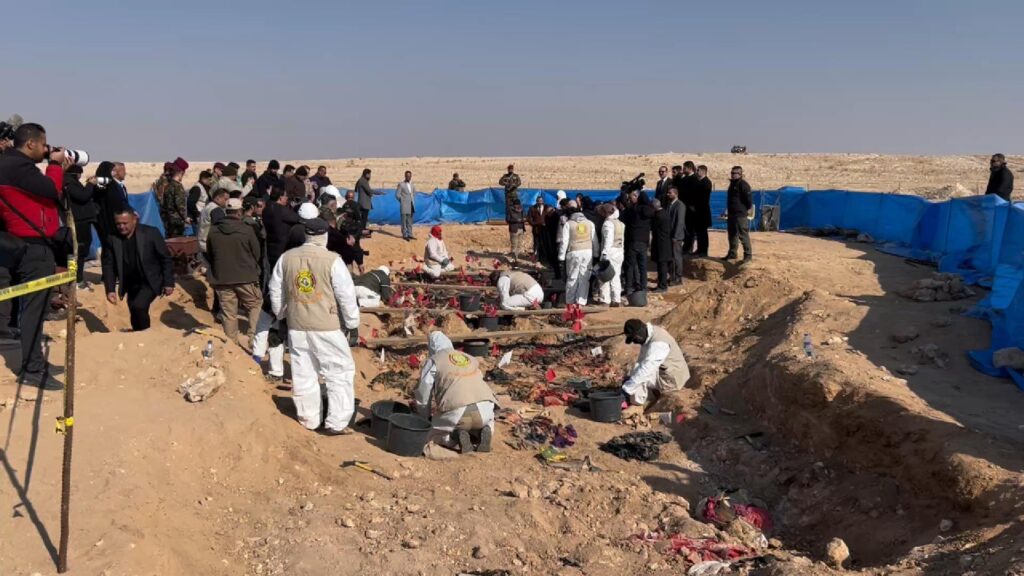Iraq’s October Revolution: Six Months On
Over the last six months there have been a number of significant updates to the political situation in Iraq as it grapples with the pressure of the October Revolution protest movement as well as foreign interference from the United States (US) and Iran. While the political context has changed substantially, the movement’s core demands remain largely unanswered. Iraq’s stability will depend on the new government’s ability to make concessions to the protest movement – temporarily dormant due to the spread of coronavirus – and the broader reduction of geopolitical tensions between the US and Iran.
In December 2019, Prime Minister Adil Abdul Mahdi stepped down following pressure from the protest movement (more on the movement below). Qassim Soleimani, a major general in the Islamic Revolutionary Guard Corps (IRGC) and a commander of the Quds Force, and Abu Mahdi Al Muhandis, a prominent leader of the Popular Mobilization Forces (PMF), were killed in an American airstrike on 3 January 2020, upsetting the fragile security situation in Iraq and pushing Iran and the US closer to war. Demonstrators set a deadline in mid-January 2020 for the government to respond to their demands. When the deadline expired without substantive changes, demonstrations again skyrocketed – with violent riots overtaking peaceful protests for the first time. Although the movement has now suspended demonstrations due to the coronavirus outbreak, potentially blunting its momentum, the pause could allow the demonstrators to reorganize and to push for further concessions when the health crisis subsides.
Key Developments: 2020
The October protest movement – which is arguably the largest grassroots socio-political mobilization in Iraq’s modern history – started primarily as an anti-government and anti-corruption movement calling for more jobs and public service provisions (Brookings, 31 January 2020). It is a leaderless, largely spontaneous movement that has lasted longer than previous protest movements (for more, see this past ACLED piece) and has evolved to include larger segments of Iraqi society. While it was started by youth and students, it soon attracted a wide array of participants, including teachers, lawyers, and union members. Women have also played a significant role, taking part in the demonstrations from the start and holding feminist rallies in February 2020 that stressed their role in the movement. As the demonstrators’ base grew, so did their demands and their rejection of the ruling elite, particularly the ethno-sectarian political system (muhasasa system) that was imposed on the country following the US invasion in 2003 (Middle East Institute, 31 January 2020).
These concerns were evident in the initial catalyst of the demonstrations: the sacking of Lieutenant General Abdul Wahab Al Saadi in late September 2019. Al Saadi commanded the country’s elite counter-terrorism forces and was a key figure in the defeat of the Islamic State (IS) in 2017 (Euronews, 3 October 2019). Seen as one of the few public figures who resisted party politics and sectarianism, many viewed his firing as the decision of a corrupt administration made at the behest of Iran. Rallies against the move placed the issue of Iranian influence and anti-sectarianism at the heart of the popular movement, alongside calls for jobs, public services and an end to corruption.
The movement’s core concerns over Iranian influence came to the fore following the US strike killing Qassim Soleimani and Abu Mahdi Al Muhandis on 3 January 2020. Though Soleimani’s death dominated headlines, the death of Al Muhandis was just as crucial for Iraq and Iran due to the vast political and military power held by the PMF. Iranian influence in the country is directly tied to the PMF and, following the defeat of IS, the PMF grew to approximately 150,000 soldiers and more than 50 brigades, among them Kataib Hezbollah (KH), the Badr Organization, and Asaib Ahl Al Haq (Foreign Policy, 31 July 2019). In 2019, there was a push to formally integrate the PMF into the Iraqi security forces; however, not all of the militias agreed to the integration, leaving their actions largely unchecked.
The killing of Soleimani and Al Muhandis threatened the existence of the movement at a crucial moment following the resignation of Prime Minister Abdul Mahdi. For many, Abdul Mahdi’s removal represented the first concrete step towards achieving a complete overhaul of the system, with further constitutional and electoral reforms ahead. Yet the geopolitical fallout from the killings threatened to overshadow the movement and put the demonstrators on a crash course for confrontation with Iran-backed militias, as the protesters were unrelenting in their demands to curb Iranian influence. In Basra and Nassiriya, Kataib Hezbollah opened fire on protesters who refused to mourn Soleimani, killing a demonstrator (Washington Institute, 10 January 2020). Demonstration activity dropped in the week of the airstrikes and the week after, only regaining momentum on the week of 19 January, ahead of the deadline given by the demonstrators to the government to heed their demands (see graph below).



